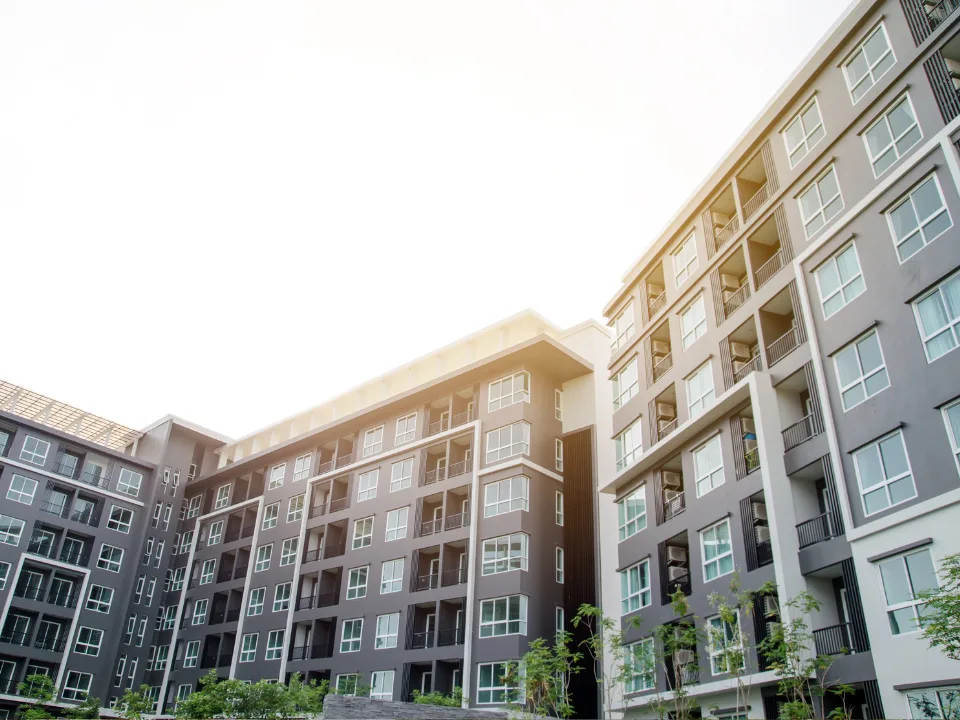ULI Predicts Pain Until 2024, Growth by 2025
The Urban Land Institute predicts positive long-term GDP growth and CRE volumes by 2025, but transactions are expected to fall 50% below 2021 levels for now. Developer Related Cos. unveils a $10B plan for a Hudson Yards casino and office complex. Meanwhile, America’s urban cores are facing a severe crisis as the pandemic continues to impact office workers’ return and property values.
Together with
Good morning. The Urban Land Institute predicts positive long-term GDP growth and CRE volumes by 2025, but transactions are expected to fall 50% below 2021 levels for now. Developer Related Cos. unveils a $10B plan for a Hudson Yards casino and office complex.
Meanwhile, America’s urban cores are facing a severe crisis as the pandemic continues to impact office workers’ return and property values.
Today’s edition is brought to you by AirGarage, the end-to-end solution for parking lot owners to boost their revenue and reduce operating expenses.
Market Snapshot
|
|
||||
|
|
*Data as of 5/30/2023 market close.
👋 First time reading? Sign up here.
LONG-TERM OUTLOOK
Urban Land Institute Predicts CRE Pain Until 2024, Growth by 2025

U.S. commercial property sales volume is expected to end 2023 at less than half the level of 2021, according to a forecast report from Urban Land Institute. (Getty Images)
The Urban Land Institute released its semi-annual Real Estate Forecast, which provides a hopeful long-term view: overall recovery and growth by 2025, though 2023 and 2024 might get messy.
The big GDP picture: The ULI forecast predicts growth for 27 indicators—including employment, inflation, GDP, vacancy rates, and more—based on input from 41 economists and analysts at 37 real estate organizations. U.S. GDP growth is projected to fall below the 20-year average of 2.01% to 0.9% in 2023 and reach 1.5% in 2024 before recovering to 2.5% by 2025.
CRE volumes halved: CRE transaction volumes are expected to drop 50% in 2023, compared to two years ago. After reaching a record $860B in 2021 and retreating to $730B in 2022, volumes are expected to drop further to $425B in 2023, below the 20-year average of $445B. However, by 2024, volumes could recover to $525B and swell to $695BB by 2025.
CRE prices down (but not for long): ULI also expects CRE prices to slip by 8% this year. Prices could slump further before a projected 2.6% price recovery in 2024, followed by a 5% price gain in 2025. Notably, CRE prices are expected to grow within a year, while transaction volumes may not recover until 2025.
Rents keep going up (except office): ULI anticipates a 6.2% growth in industrial rents in 2023 and 4% over the next two years. Average apartment rents are expected to grow yearly at 2.8%, whereas retail rents will creep up at a rate of 2.1%. Unfortunately, office rent growth is expected to decline, with a projected 2.8% decrease in 2023, followed by a 2% decline in 2024, before staying flat in 2025.
➥ THE TAKEAWAY
What it means for your wallet: Despite short-term challenges, the real estate market displays resilience and the potential for recovery in the upcoming years. Institutional-grade commercial real estate investments experienced a decline below the 20-year average in 2021 and 2022, but a positive rebound is projected for 2024 and 2025.
⏩ Forward this article by clicking here.
TOGETHER WITH AIRGARAGE
Legacy Parking Hurting Your Bottomline?
Boost your property’s profits with AirGarage.
Say goodbye to legacy parking methods. AirGarage offers a complete parking management solution that cuts costs, increases revenue, and enhances efficiency.
Switching to AirGarage means maximizing your income through improved traffic flow, higher revenue per vehicle, and reduced operating expenses.
On average, customers who have made the switch to AirGarage have witnessed a 23% boost in net operating income within their first year.
I’LL RAISE YOU
Hudson Yards Developer Reveals Surprise Addition to $10B Casino Bid: 2 MSF Office Tower

Illustration of Related Companies CEO Jeff Blau playing craps (Getty; Illustration by Kevin Rebong for The Real Deal)
Related Companies just released a revised $10B plan for its Hudson Yards casino mega-complex that rolls the dice on two gleaming skyscrapers after top contenders failed to meet the requirements.
Falling flat again and again: Related Co.’s revised plans come after projected frontrunner Steve Cohen’s proposal for a casino complex near Citi Field was shot down last week. Other big proposals—including casinos near the United Nations, Times Square, on Saks Fifth Ave., and in Coney Island—have all faced stiff resistance from local officials. Two of three available NYC casino licenses are already taken, and the last one is going to go fast.
Looks like a winning proposal: The proposed $10B development plan for the Yards’ entire western half, which plans to kick-start by the 3 MSF Wynn-branded tower, will house a 1,700-room hotel and casino. The luxury skyscraper will have 250 KSF of gambling space and include table games like blackjack, craps, poker, and roulette, along with high-end restaurants and shops that attract both whales and guppies looking to try their luck on the far West Side.
Additions to Hudson Yards: Related plans to retain a previously announced 5.5-acre public green park connected to the High Line, a much-needed public school for the area, and a rental apartment tower with 329 affordable units. The project will also feature a new 2 MSF office tower, which will be a surprise addition to the undeveloped 6.5-acre portion of Hudson Yards between 11th and 12th Aves.
Not their first rodeo: Did we mention that Related’s four office towers on the Hudson Yard site’s eastern half are nearly fully leased? 10, 30, and 55 Hudson Yards are either fully leased or sold to tenants like KKR, while under-construction 50 Hudson Yards is already 90% spoken for.
➥ THE TAKEAWAY
Odds-on favorite: While there are still hurdles to overcome, Related is very likely to win due to its experience successfully developing office towers in Hudson Yards. The ambitious scale of its proposal, which now includes developing a 5.5-acre public green park, an area public school, 329 affordable rental units, and a 2 MSF office tower, also turns heads. The next round of the casino selection process will likely be in July, with winners being announced by year-end. The three casino licenses could contribute $1.5B to the state’s cash-starved budget.
⏩ Forward this article by clicking here.
🌐 Around the Web
📖 Read about how a new FL law aimed at undocumented immigrants could lead to a labor shortage for the state’s construction industry, forcing contractors to raise wages and benefits.
🖥️ Watch legendary investor Stan Druckenmiller discuss the future of investing in the post-pandemic, remote, AI-first business era at the Sohn 2023 Conference.
🎧 Listen to the National Apartment Association (NAA) discuss their “20 in Their 20s” program, which recognizes young professionals in the multifamily sector on this episode of The Lease-Up.
Your feedback is important. Can you help us with a quick 5-minute survey? As a token of our appreciation, you’ll score CRE Daily’s Back of the Napkin Multifamily Deal Screen + a shot at winning a $450 YETI Tundra 75 Cooler!
A VICIOUS CYCLE
How America’s Property Barons Plan to Survive the CRE Crisis

The real estate market faces significant challenges as vacancies rise and interest rates increase. This double impact is severely affecting office towers and retail outlets nationwide, causing a steep decline in property values from New York to San Francisco. Here’s what property barons are doing about it.
Offices are emptying out: A steady stream of office workers has kept office buildings leased for centuries. But remote work has changed the game. JLL reports that office towers lost nearly 20 MSF of leases in 1Q23. A record 962 MSF of office space in the US is now vacant, accounting for 20.2% of the country’s total stock. Vacancies are highest in former stronghold cities like New York, D.C., and Chicago.
Paying the price: Several developers, who had taken on significant leverage prior to the pandemic, are currently confronted with difficult decisions. With interest rates reaching as high as 7.5%, they are left with two options: refinancing at elevated rates or facing the risk of default. Moreover, the task of selling properties at a substantial discount has become increasingly arduous, resulting in a decline in office transactions. However, even locating a buyer in the first place has become an additional hurdle to overcome.
Even the little guy is out: To make matters worse, there’s a marked lack of interest from retail investors in the sector. Publicly traded office REITs such as Vornado (VNO), SL Green (SLG), and Boston Properties (BXP) have seen their stock slide more than 50% over the past year as office buildings lost an estimated $506 in value from 2019 to 2022 nationwide.
Crime is going up: All of this means declining city revenue from property taxes, which worsens crime and homelessness, triggering a vicious cycle that can cause more companies to flee. Petty crime in NYC is up by 29% since 2019, and homelessness in the Bay Area surged by 35% in the same timeframe. Starbucks (SBUX) has closed 16 locations nationwide, including six in Seattle, two in Portland, and one in D.C., citing safety concerns due to rampant drug use.
Conversion plans as a last resort: In struggling CRE cities, government officials have introduced incentives and plans to convert office towers into residential buildings. Nonetheless, such plans have proved challenging, as most commercial nodes are designed for office operations rather than residential use. Moreover, major spending may be needed to modify each building’s infrastructure to make it habitable.
➥ THE TAKEAWAY
Restructuring for survival: When 70% of the office stock in the United States is either obsolete or heading toward obsolescence,” and crime is up in every major U.S. city, trusting that we’re going to have a soft landing is looking more and more like a matter of faith. But no matter what happens, owners and developers should prepare plans for poorly performing properties, such as restructuring debt, offering reduced rates, renovating to attract new tenants—whatever works.
⏩ Forward this article by clicking here.
📰 Daily Picks
-
CRE impeachment: Texas Attorney General Ken Paxton faces impeachment over corruption allegations involving Nate Paul, founder and CEO of World Class Holdings.
-
REITs set a new record: An index that tracks U.S. office REITs has plunged to its lowest levels since July 2009, down more than 27% YTD.
-
Analytics for the aging: Nearly 70% of Americans 85 or older will require long-term care, making strategic investments in senior housing market operators necessary. But you need good data.
-
Across the pond: Canary Wharf, east London’s famed financial district (owned by Brookfield and Qatar), just got its debt downgraded by Moody’s in a sign of the times.
-
Building Hope: Tredway has invested $150M to add affordable housing to Coney Island, with 816 units for low-income households, 90 for the formerly homeless, and 250 for seniors.
-
Billionaire hotspots: The USA Wealth Report reveals that the majority of billionaires reside in the Bay Area, New York, Los Angeles, Shanghai, and Beijing.
-
Retail investors eye CRE: Over 50% of individual investors express interest in CRE due to steady income, inflation protection, and tax benefits, according to a study by Cadre.
-
Revolutionizing urban storage: Seattle-based startup Stuf Storage is converting unused spaces, including offices, into self-storage units. They’ve secured $11M in a Series A.
-
Volatility hits lending: In 1Q23, the CBRE Lending Momentum Index fell 33%, resulting in decreased lending activity in CRE, with government agency lending also declining by around 50%.
-
CRE’s private fund fans: Private credit funds for middle-market companies have grown since the financial crisis, with $1 trillion in AUM, per the Fed’s May 2023 Financial Stability Report.
-
The Texas Miracle: In a follow-up to Bisnow’s The Texas Miracle, take a look at how Texas has attracted hundreds of businesses in the past few decades, and why it’s all coming to a head.
-
San Francisco shipyard: With $61.5M in city funds, San Fran shipyard area development continues, with a new 77-unit building opening and nearly 200 affordable rental units breaking ground.
-
When you can’t sell it, discount it: Some of NYC’s best-known CRE developers are getting antsy, selling unprofitable Class B and C office buildings at steep discounts.
-
The Oracle of Pretoria: Elon Musk has been publicly predicting that U.S. CRE will collapse, with residential home values to follow. He believes up to $450B in debt may go into default.
📈 Charts of the Day
Americans now owe almost $1 Trillion in credit card debt, a record high.
The average interest rate on a new credit card is 24%.
The average American household now carries $10,000 in credit card debt.
This trend of rising debt makes wealth creation difficult.
— Andrew Lokenauth (@FluentInFinance)
May 30, 2023
Is Opendoor starting to turn things around? Last year was brutal for them when the market shifted, but it seems like they are trying to pivot. Most of their current listings are well above what they paid. Some thoughts in my weekly post.
— Ryan Lundquist (@SacAppraiser)
May 30, 2023
What did you think of today’s newsletter? |
HIT THE INBOX OF 65K+ CRE PROFESSIONALS
Advertise with CRE Daily to get your brand in front of the Who’s Who of commercial real estate. Subscribers are high-income decision makers, investors, and C-suite executives always looking for their next investment, product, or tool.




















